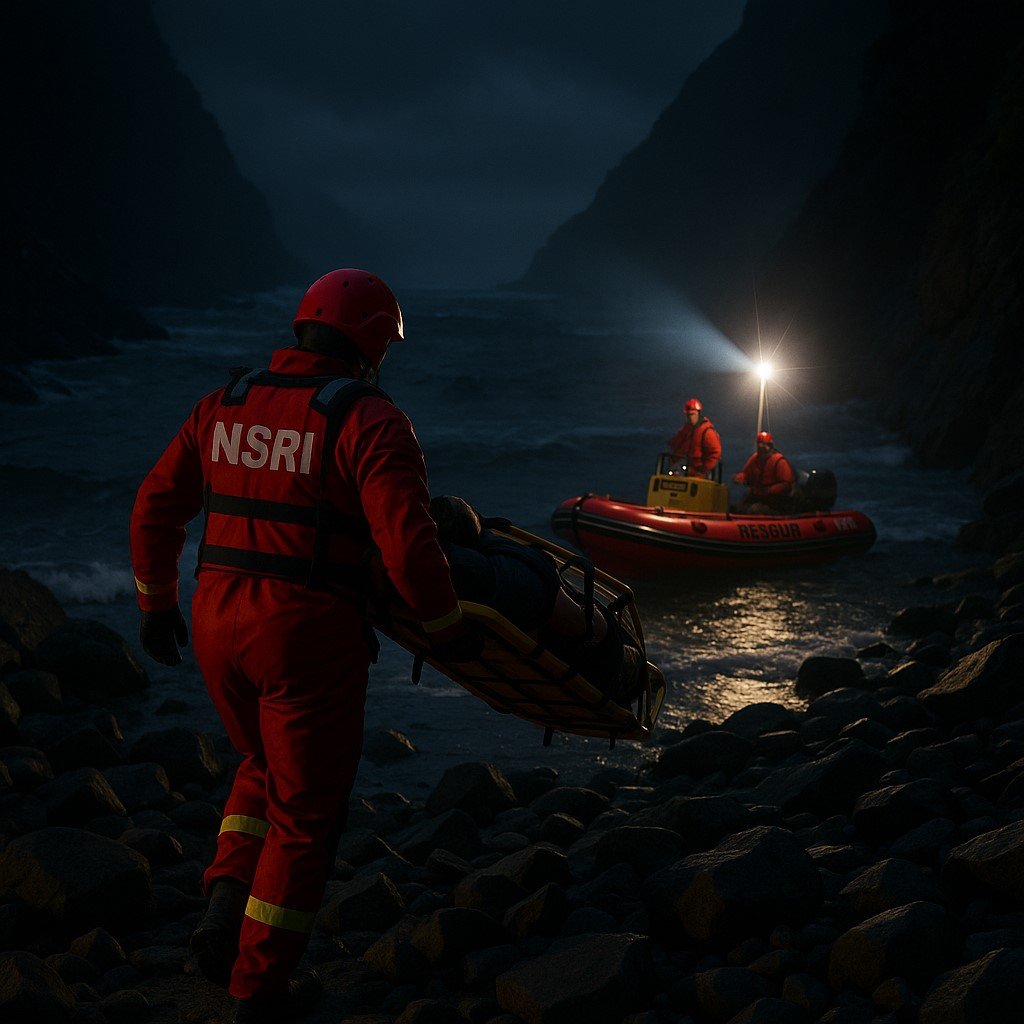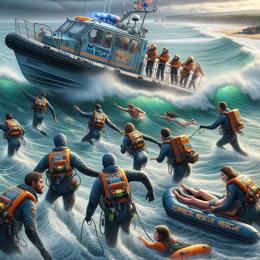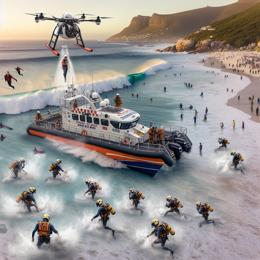Image created by AI
Heroic Twilight Rescue in Eastern Cape: The Gritty Operation at Grootkrans Gorge
In a gripping demonstration of courage and quick response, the National Sea Rescue Institute (NSRI) Station 36 in Oyster Bay conducted a challenging rescue in the treacherous terrains of Grootkrans gorge, located just upstream of the Elands River Mouth, Eastern Cape. The operation started after receiving a distress call concerning a 74-year-old hiker who had taken a severe fall.
The incident, which occurred late afternoon, presented immediate and significant challenges due to its remote location and the rugged nature of the gorge. Station Commander Lodewyk Van Rensburg, who was caught off-guard while inland, responded swiftly as he recognized the gravity of the situation upon receiving the signal. With helicopter support unavailable and against the harsh coastal environment characterized by steep cliffs, aggressive surf, and minimal road access, the decision was made to launch a 5.5-meter rescue craft.
As the sun dipped below the horizon, the team faced additional obstacles. Winds at 30 knots and rising seas between 3 to 4.5 meters, compounded by a light fog, made navigation precarious. Despite these conditions, the crew successfully navigated through a narrow sandbank window to access the gorge, a maneuver that nearly compromised their vessel as it took on sand.
The extraction of the injured hiker was particularly perilous. The rocky and steep landscape made it impossible for paramedics to reach her with their equipment. Displaying remarkable resolve, the rescue team managed to stabilize the hiker on a backboard and swam her out to their boat in pitch darkness, guided only by the inadequate light of a spotlight reflecting off the water.
An initial failed attempt to leave the gorge saw the boat momentarily stuck on a sandbank. However, the crew's determination saw them successfully time their departure with the swells, narrowly escaping the dangerous surf. Transporting the injured woman, who now exhibited signs of potential spinal injuries and hypothermia, required careful navigation back to shore at a painstakingly slow speed of 5 knots over a 12 nautical mile stretch.
The operation was not just a test of physical endurance and skill but also of mental fortitude. Ian Gray of the NSRI’s Regional Operations Support Committee anticipated the complexity of the rescue and was instrumental in setting up landing lights which guided the crew to safety upon their return.
Reflecting on the night's events, Lodewyk candidly acknowledged the high risks involved in the operation. However, the subsequent affirmation from medical professionals that the timely rescue likely saved the hiker’s life put the dangers into perspective, underscoring the critical role that the NSRI plays in emergency situations.
This intense rescue serves not only as a reminder of the unpredictable nature of the Eastern Cape’s coastal and gorge terrains but also highlights the bravery and relentless spirit of NSRI rescuers who are continuously learning and adapting to ensure that they are prepared for whatever challenges they may face next.










